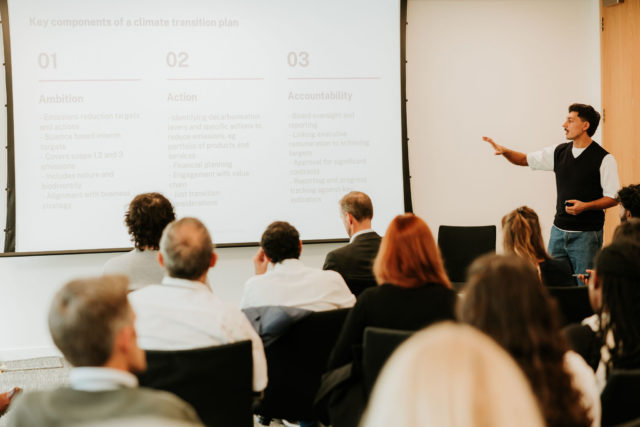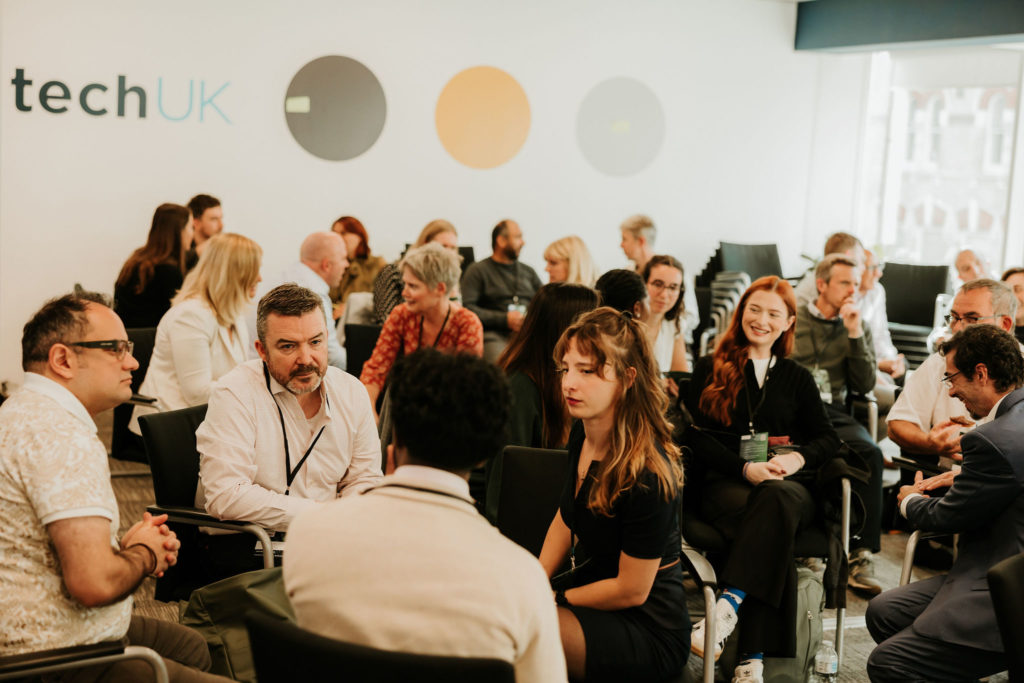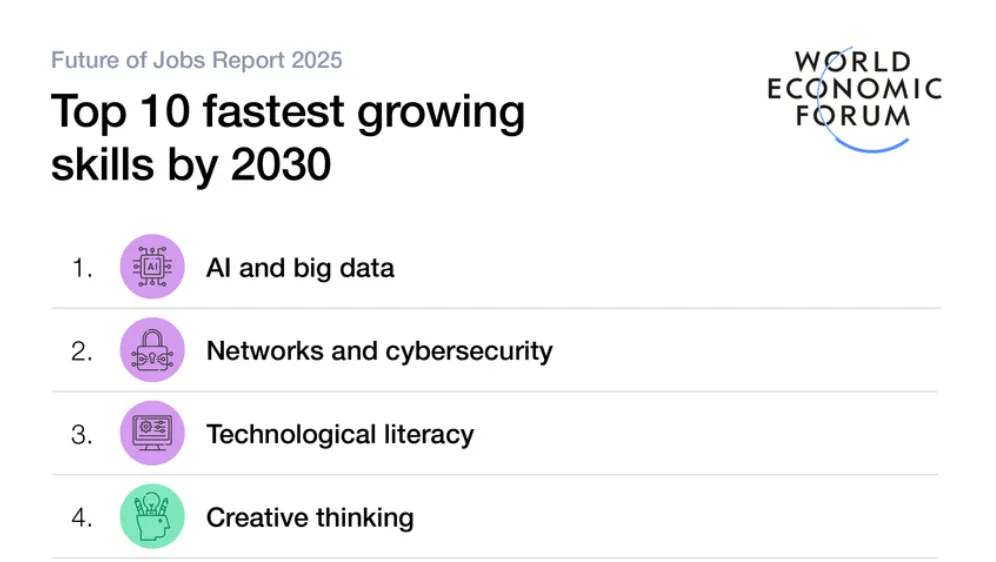News & Insights
Designing climate transition plans that actually work: lessons from our TechUK workshop

What if we’ve been thinking about corporate sustainability completely wrong? This provocative question emerged during our recent workshop with TechUK, where over 30 professionals joined our session on how to design and implement climate transition plans.
During the workshop, we heard that ESG should be reframed as a profit centre instead of a cost centre, as well as the importance of embedding sustainability skills and expertise across the business, from legal to finance to product design and sales. These were two of many insights that surfaced when we facilitated a collaborative and interactive workshop that explored the challenges and opportunities around transition planning – across sectors and specifically in the tech space.
What the workshop involved
TechUK’s 2025 Tech and Net Zero Conference had a packed and impressive agenda, from presentations to panels. While the content was interesting and the speakers were excellent, we wanted to give attendees the space to connect, collaborate and think creatively during the workshop breakouts. Applying our design thinking principles and experiences from running hackathons, we planned a fun and interactive session, bringing sticky notes, discussion prompts, and movement-based exercises.
We started the session with a “donut” icebreaker (we provided actual donuts too) where we asked participants to introduce themselves to each other and discuss what climate risks and challenges were affecting their business. This was just the warm up, but we loved seeing attendees immediately buying into the workshop, creating an exciting energy around the room.

We then guided participants through two collaborative exercises. First, we explored what design features make up a credible transition plan before asking participants to imagine a tech-specific roadmap, encouraging them to think boldly about the unique challenges and needs of the industry.
This led us to the main exercise, where we flipped traditional stakeholder analysis on its head. We mapped key stakeholders – C-suite, Legal, Sustainability, Supply Chain and Procurement, Finance, IT/Cloud Operations, and Product/Engineering – around the room and had groups rotate between stations, using sticky notes to plot each stakeholder’s needs, responsibilities, blockers, and quick wins. This wasn’t just about understanding different perspectives, it also allowed us to work backwards from implementation scenarios to better understand what really enables or prevents progress.

What we learned together
We provided participants with the opportunity to share reflections on the stakeholder exercise – generally and what they learned from specific departments, or connections they identified between stakeholders.
The insights that emerged challenged conventional wisdom about transition planning. Participants identified that sustainability can’t live in a silo – it needs embedding across all organisational functions, rather than sitting in large and sometimes isolated teams that become another cost centre and focus on reporting.
Tech-specific challenges surfaced too. While procurement traditionally provides leverage for green obligations, the reality of tech sector consolidation means buyers often find themselves at the mercy of dominant suppliers. This sparked discussion about the importance of industry alliances, for example the Government Digital Sustainability Alliance (GDSA), in driving collective change.
Interestingly, participants highlighted a gap in current conversations around climate. While there is a major focus on reducing emissions, tech infrastructure faces urgent adaptation and resilience challenges too, from water shortages affecting cooling systems to extreme weather threatening data centres. In other words, the transition plan conversation needs to expand beyond carbon.
Much like the workshop itself, the session reinforced that effective climate transition planning requires collaboration and iteration. As one participant noted: “You can’t do it on your own.”

The value of working creatively and collaboratively
By creating space for creative thinking, cross-functional perspectives, and honest discussion about implementation barriers, we were able to move from conventional content to meaningful conversations that people can not only relate to, but can take back to their organisation in a confident and actionable way.
While technology is dramatically changing how we work, particularly in the legal sector, AI can’t replace our capacity to get in a room and think creatively, critically and contextually about things. In fact, we recently learned at another event, Legal Geek, that creative thinking is the fourth fastest growing skill by 2030 according to the World Economic Forum. Significantly, it is the first non-technology related skill on the top 10 list.
So, as much as we’re interested in and experimenting with AI, our approaches remain rooted in collaboration, iteration and design thinking. This workshop was a good example of this.

Thanks to TechUK for inviting us. Email us at [email protected] if you’re running an event and would like to explore similar workshops with us.
And to keep the momentum going:
- Join our Climate Contracting Working Group, where the collaboration continues
- Sign up our newsletter to be the first to hear about future events
- Follow our LinkedIn for latest developments

